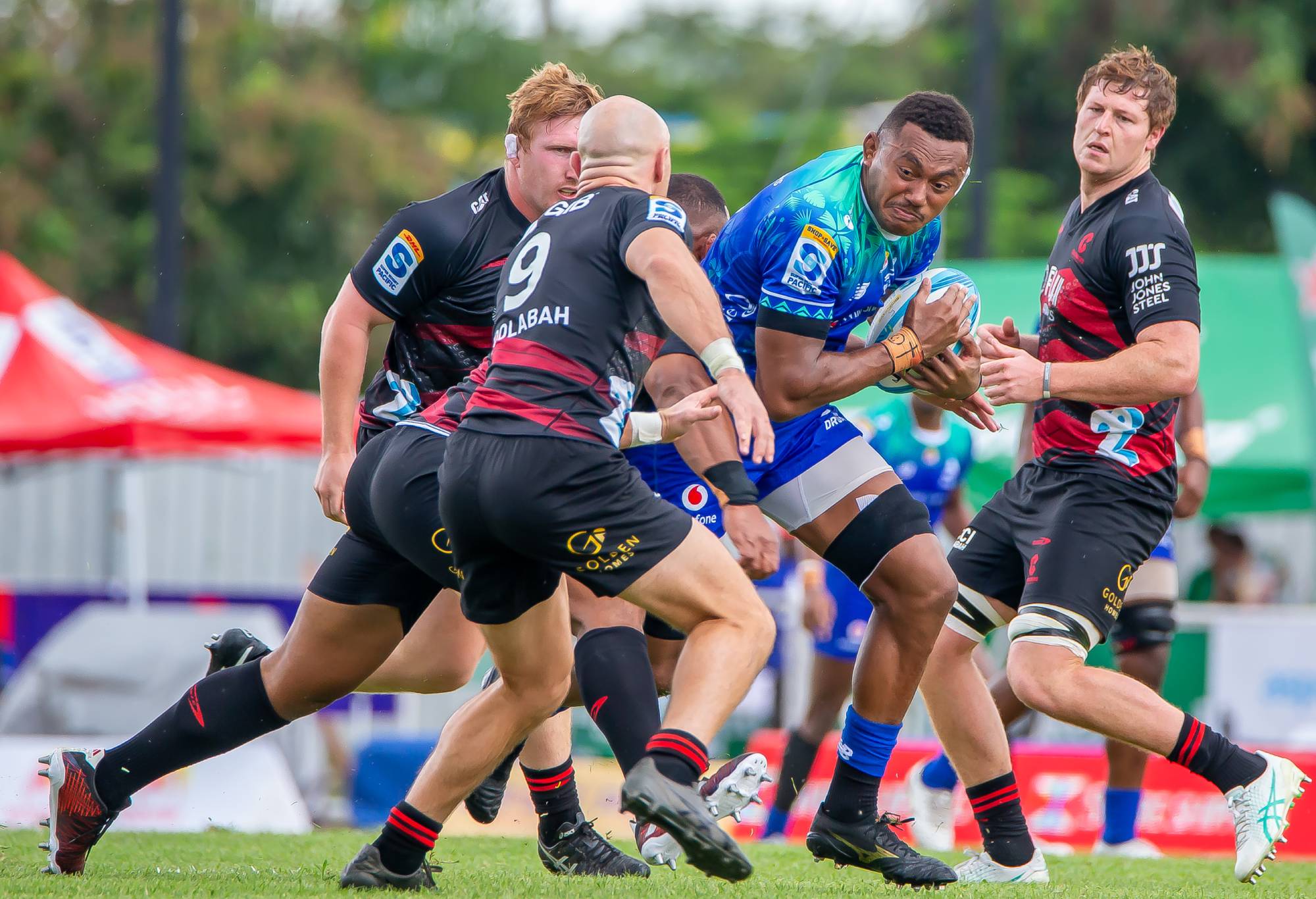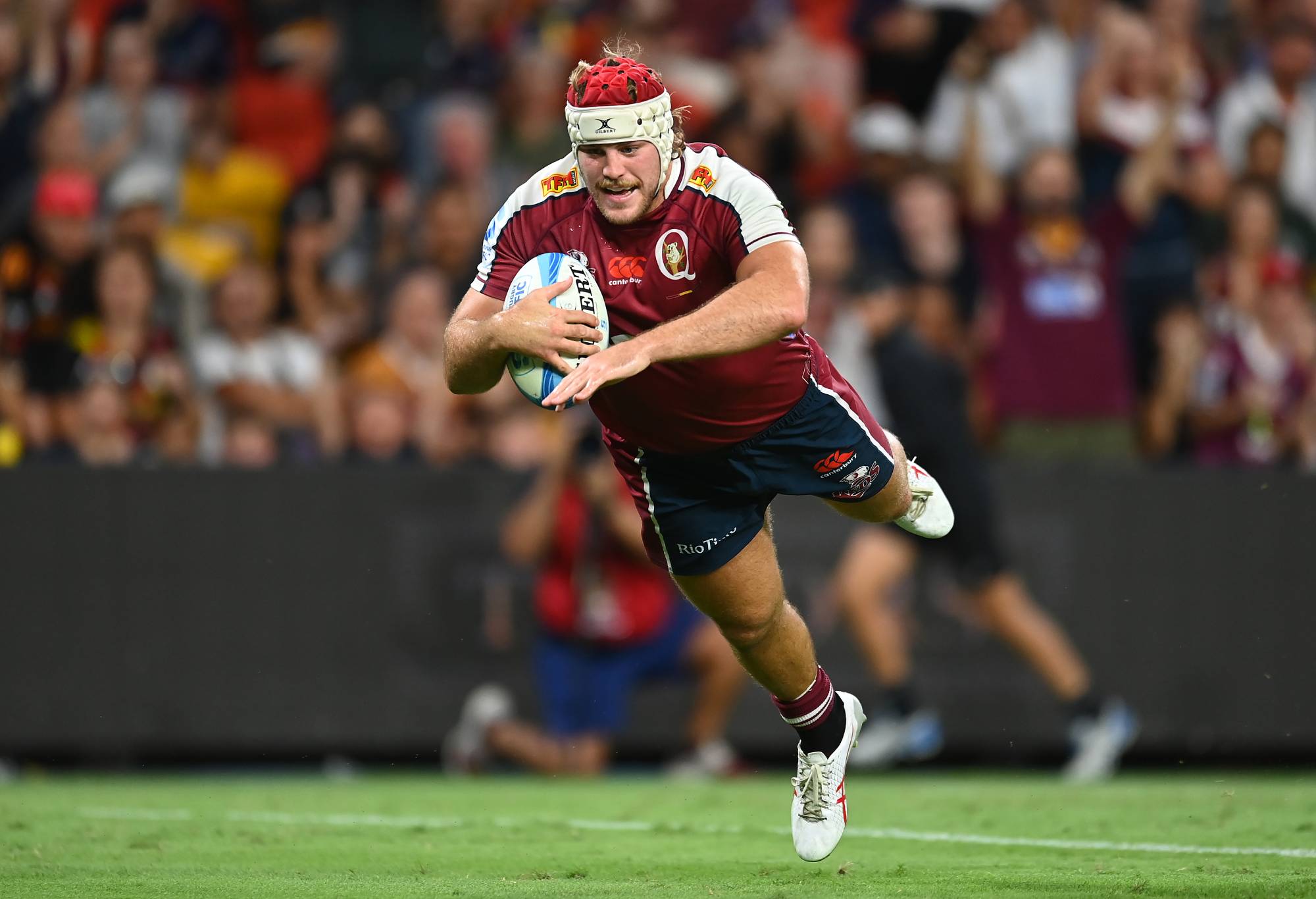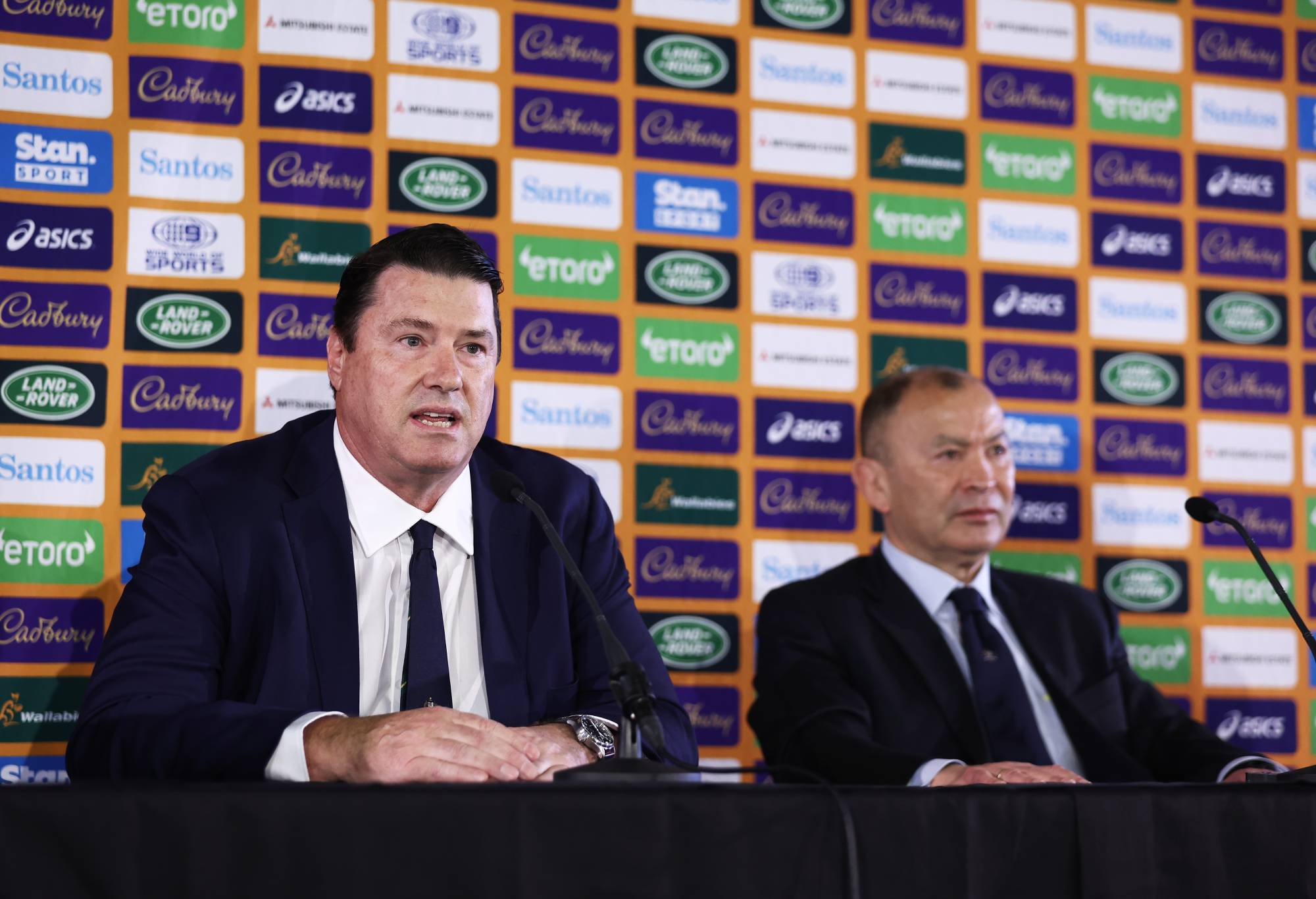For the first time since 2012, the Crusaders have lost three consecutive matches.
Their 20-10 defeat to Fijian Drua in Lautoka – in what was another terrific advertisement for Super Rugby Pacific – doesn’t spell the end of their chances for 2023. But it does underline a power shift that is real, and many would say necessary, to inject life back into the competition.
The Crusaders are avid disciples of Gain Line Analytics’ Team Work Index (TWI). Entering this season, they knew those indicators were down for this year and next, and they are well aware that this is a tricky period for them to work through.
It’s not just that Sam Whitelock, Richie Mo’unga, Codie Taylor and Will Jordan are missing, nor that there are inexperienced players in key positions, or a new coach that isn’t Scott Robertson. It’s the absence of combinations, the time needed to build a bank of matches together, that has brought the Crusaders back to the pack.
Or, as it sits right now, below the pack, with the Crusaders, along with the Force, one of only two winless teams. At the other end of the table, the Hurricanes are the only team undefeated; an incredible stat for a competition that typically, even at this early stage, has formed itself into a distinct top and bottom tier.
It’s early days of course, but anyone looking closely at the work going into the Australian franchises over the last year or so, won’t be surprised to see the trans-Tasman win-loss ratio further correct itself over the coming weeks.
There’s no official record of the lowest non-COVID crowd for a Super Rugby match, but the 400 or so people who piled into FMG Stadium on Friday night to see the Rebels defeat Moana Pasifika 29-23, can almost certainly consider themselves part of history.
What was instructive was the pile-on that followed; shots of the empty stands pinging around social media, accompanying calls to once and for all put the embarrassment that is Super Rugby out of its misery.
It was obvious that fans had no idea that the match between a side based in Auckland – with an already low supporter base – and a side from Melbourne, had been shifted at late notice to a neutral venue in a different city. At the same time, the NZ Warriors were opening their season in Auckland.
Super Rugby’s problem has never been the rugby. As if any further evidence was needed, the lack of engagement and communication disconnect between those responsible for running the competition, and rugby’s fanbase has never been wider.
For the record, those of us who were there had a nice time; after all, who doesn’t crave an unexpected opportunity to visit Hamilton?
The match itself may have been a grind, but it was impressive to see how Lukhan Salakaia-Loto, in the absence of skipper Rob Leota, took charge during the final quarter, insisting on playing through the Rebels’ dominant scrum and line-out maul to secure the win.
The Waratahs were left to rue a late penalty miss from Tane Edmed, falling to the Highlanders, 23-21. Most relieved was Folau Fakatava, whose poorly conceived and executed kick over the dead-ball line with a minute to play, provided the Waratahs with a final opportunity.
There were many heroes for the impressive Drua. Halfback Frank Lomani can sometimes over-play his hand, but his energy was crucial, along with a huge shift from Tevita Ikanavere, and electric running from Selestino Ravutaumada. The Crusaders were brave but, in the end, well beaten.

Vilive Miramira of the Fijian Drua runs with the ball against the Crusaders. (Photo by Pita Simpson/Getty Images)
They won’t be the last. Is there a tougher test in rugby than an away match in Lautoka? Where the heat, humidity and crowd all serve to amplify the force of the hits?
In Wellington, the Blues were hampered by multiple backline disruptions, but regardless, were well covered on the day by a mature Hurricanes team, 29-21.
Replacing the excellent Cam Roigard, it was great to see TJ Perenara returning after a double Achilles rupture. An absence of 16 months is a long time out of the game; so long that viewers were treated to the unusual sight of referee Jordan Way explaining a law to Perenara, instead of the other way around.
In Canberra, the Force were quick out of the blocks against the Brumbies but, the longer the match went on, they were unable to hold their scrum together, and fell short, 22-19.
There’s a win or two around the corner when they do, but in the meantime, the Brumbies remain the best team in Australia at eking out a win when not at their best.
And so to Brisbane, where the best was saved until last. The Reds’ 25-19 win against the Chiefs was not only richly deserved, but it came with a healthy dollop of dash and daring in the first half, and connected determination at the finish.
This was a match won and lost at the breakdown; the speed of the Reds’ recycle opened up opportunities for their backline in the first half, and their ability to slow down the Chiefs’ ball was a crucial factor in the second.

Fraser McReight of the Reds scores a try against the Chiefs. (Photo by Albert Perez/Getty Images)
Despite the Chiefs working through 23 phases in the red zone in their final attack, the Reds’ defensive organisation and hustle forced the tired-looking Chiefs into a static, one-dimensional approach that never looked like bringing a try.
With a total margin of just 35 points across all six matches, these are the kinds of high-quality matches that fans – on both sides of the Tasman – like to see. Contributing to the free-flowing spectacle was a relaxed Ben O’Keeffe; albeit too relaxed in not sending Samipeni Finau to the sin-bin for a woefully late hit on Tom Lynagh.
Sure, there was no head contact, and Finau’s right arm was clearly wrapping around Lynagh’s body as he drove his shoulder into his ribs. But players should always be protected against being blindsided by late hits well after they have passed the ball. Foul play, pure and simple.
Also poorly conceived was the decision by the Hurricanes Poua players to double down on their decision to perform what, to most observers, looked like a politically motivated haka, before their match in Wellington against the Crusaders Matutu.
Yesterday, the Hurricanes and advocates rushed to convince critics that a group that last week spoke to “puppets of a red-neck government”, and then said this week, “governments are temporary, the Treaty will endure”, was actually urging the nation to get behind the team and refocus themselves on the game.
It remains to be seen what the Hurricanes’ fanbase thinks of that explanation.
Wherever one sits with respect to holding political views in or out of sport, the notion that a group of 30-odd players are all identically politically aligned and that no peer pressure is being exerted on players to support the views of more strident team members is questionable.
A second major power shift was underlined last week by revelations of a huge overspend on the Wallabies’ 2023 World Cup campaign. CEO Phil Waugh noted, “the over-investment that was unapproved was $2.6m,” and how “the organisation only became aware of the true extent of the overspending once the World Cup finished.”
Note that the figure of $2.6m comes on top of an initial ‘approved’ overspend. Tellingly, the total World Cup expenditure has not been disclosed.
Questions around governance are so obvious they hardly bear asking. What business, let alone one as financially fragile as Rugby Australia, allows employees to rack up unauthorised expenses of $2.6m?
You don’t have to look far for an answer – and with it, an explanation for why the situation with the Melbourne Rebels is such a hot mess.
The direction of an organisation is determined by where the seat of relative power resides. Sales versus engineering. Marketing versus human resources. Head office versus state offices. Chairman versus chief executive.
As Rugby Australia chairman, Hamish McLennan commanded high authority; the appointment of Eddie Jones is an obvious example. The lack of financial discipline around that appointment and other costs incurred is a by-product of this.
An injection of funds from private equity was supposed to be the magic elixir. An opportunity to help Super Rugby franchises clean up some of their debt, a chance to increase investment in Women’s rugby and to throw a few crumbs at the grassroots game.

Rugby Australia chairman Hamish McLennan with Wallabies coach Eddie Jones. (Photo by Matt King/Getty Images)
When this never eventuated, when Jones never delivered, and the states moved against McLennan, this signalled a shift in power within Rugby Australia; not to Waugh or new chairman Dan Herbert, but to Chief Financial Officer, Richard Gardham.
In December, discussions with the Rebels about managing their forward situation ceased. With McLennan gone and the Waratahs debt already folded in, enough was enough.
Almost in an instant, Rugby Australia shifted from an organisation ill-disciplined enough to allow $2.6m of unauthorised expense to one operating under an austerity program.
It is believed Gardham, an ex-salary cap auditor for the NRL, without a rugby background, is about to shift into the role of Chief Operations Officer. Decision-making within Rugby Australia is now driven by the necessity of living within its financial means; whatever that might mean for existing franchises, player salaries, and the structure of competitions.
In recent weeks, Herbert and Waugh have been insisting that Rugby Australia must, and will, stop spending money it doesn’t have.
At face value, that’s a position that can’t really be argued with. The extent of their accountability, as members of a passive board that allowed McLennan to run rampant, is a different question. A matter that requires far more transparency and explanation than has so far been forthcoming.
The immediate problem for Rugby Australia is that a new austerity model does not account for undertakings that may have been made to the Rebels and other franchises, under McLennan’s stewardship.
By lodging a statement of claim against Rugby Australia, the Rebels directors are essentially seeking two things; to not be left carrying the can for debt they believe belongs to the game, and for Rugby Australia to return to the negotiating table, to discuss how, with the involvement of potential new investors, the Victorian state government, and major creditors, the Rebels can be dealt back into Super Rugby for 2025 and beyond.
The ’new’ Rugby Australia does not have the money or inclination to allow either. But there are substantial risks should they allow the matter to proceed to court. A loss would see Rugby Australia’s costs multiply as other franchises line up to seek restitution of the annual funding withheld from them.
Moreso, a court hearing would necessitate the airing of details that almost certainly would reflect poorly; albeit the extent to which reputational damage might any longer be a material concern for an organisation as embattled as Rugby Australia.
Power shifts. As the coming weeks unfold, stand by with high interest to see how the Crusaders and Rugby Australia deal with their changed circumstances.































































































